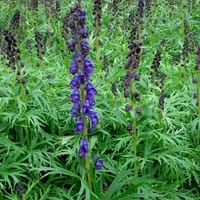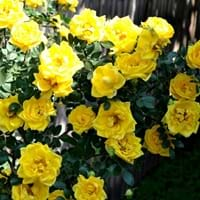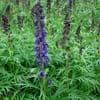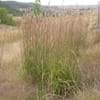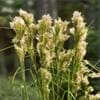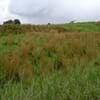Life Span
Perennial
Perennial
Type
Flowering Plants, Perennial
Perennial
Origin
Not Available
Eastern Europe, Western Asia
Types
Yellow Monkshood, Carmichael's Monkshood, Kamchatka Aconite
Rosa Harisons Yellow, Rosa Persica
Number of Varieties
Not Available
Habitat
low mountains
gardens, Pastures, Prairies, Terrestrial, Tropical regions
USDA Hardiness Zone
4-8
3-8
AHS Heat Zone
Not Available
10-1
Sunset Zone
Not Available
1a, 1b, 2a, 2b, 3a, 3b, 4, 5, 6, 7, 8, 9, 10, 11, 12, 13, 14, 15, 16, 17, 18, 19, 20, 21, 22, 23, 24
Habit
Upright/Erect
Oval or Rounded
Flower Color
Blue, Violet
Yellow
Flower Color Modifier
Not Available
Not Available
Fruit Color
Non Fruiting Plant
Non Fruiting Plant
Leaf Color in Spring
Green
Not Available
Leaf Color in Summer
Green
Not Available
Leaf Color in Fall
Green
Not Available
Leaf Color in Winter
Green
Light Green
Leaf Shape
Upright
Pinnate
Plant Season
Fall, Summer
Summer, Fall
Sunlight
Full Sun, Partial shade
Full Sun, Partial Sun
Type of Soil
Moist
Loam, Sand
The pH of Soil
Not Available
Acidic, Neutral
Soil Drainage
Well drained
Well drained
Bloom Time
Early Fall, Late Summer
Early Summer, Summer, Late Summer, Early Fall
Tolerances
Not Available
Drought
Where to Plant?
Ground
Ground, Pot
How to Plant?
Divison
Grafting, Stem Planting, Transplanting
Plant Maintenance
Medium
Medium
Watering Requirements
Do Not over Water, Requires regular watering
Form a Soil ring to water efficiently, Requires regular watering, Water twice a day in the initial period, Water when soil is dry
In Summer
Lots of watering
Lots of watering
In Spring
Moderate
Moderate
In Winter
Average Water
Average Water
Soil pH
Neutral
Acidic, Neutral
Soil Type
Average, Moist
Loam, Sand
Soil Drainage Capacity
Well drained
Well drained
Sun Exposure
Partial Sun
Full Sun, Partial Sun
Pruning
Remove damaged leaves
Prune if you want to improve plant shape, Remove damaged leaves, Remove dead leaves, Remove deadheads, Shape and thin as needed
Fertilizers
All-Purpose Liquid Fertilizer
All-Purpose Liquid Fertilizer, organic fertlizers
Pests and Diseases
Citrus leaf miner, Leaf spot, Mealy bugs, Mites, Rust, Verticillium Wilt
Aphids, Bacterial Diseases, Mites, Slugs
Plant Tolerance
Drought
Drought
Flower Petal Number
Not Available
Not Available
Edible Fruit
No
Not Available
Foliage Texture
Bold
Not Available
Foliage Sheen
Matte
Not Available
Attracts
Bees
Not Available
Allergy
breathing problems, Nausea, Rapid Heartbeat, Sweating, Vomiting, weakness
no allergic reactions
Aesthetic Uses
Showy Purposes
Beautification, Bouquets
Beauty Benefits
Not Available
Not Available
Environmental Uses
Not Available
Air purification
Medicinal Uses
Gout, Heart problems, Inflammation, Joint pain, Kidney problems, Nerve pain, Wounds
No Medicinal Use
Part of Plant Used
Whole plant
Flowers
Other Uses
Used in herbal medicines
Showy Purposes, Used as Ornamental plant
Used As Indoor Plant
No
No
Used As Outdoor Plant
Yes
Yes
Garden Design
Cutflower, Mixed Border
Container, Cutflower, Feature Plant, Foundation, Mixed Border
Botanical Name
Aconitum variegatum
Rosa foetida
Common Name
Aconite, Monkshood, Wolf's bane, Leopard's bane, Mousebane, Women's bane, Devil's helmet, Queen of all Poisons, or Blue rocket
Austrian briar, Persian yellow rose, Austrian copper rose
In Hindi
बच्छनाभ
Persian Yellow Rose
In German
Eisenhut
Persian Yellow Rose
In French
aconit
Persian Yellow Rose
In Spanish
acónito
Persian Yellow Rose
In Greek
monkshood
Persian Yellow Rose
In Portuguese
Aconitum
Persian Yellow Rose
In Polish
tojad
Persian Yellow Rose
In Latin
aconitum
Persian Yellow Rose
Phylum
Magnoliophyta
Not Available
Class
Magnoliopsida
Not Available
Order
Ranunculales
Rosales
Family
Ranunculaceae
Rosaceae
Clade
Angiosperms, Eudicots
Angiosperms, Eudicots, Rosids
Tribe
Delphinieae
Not Available
Subfamily
Not Available
Rosoideae
Number of Species
Not Available
Properties of Aconitum and Persian Yellow Rose
Wondering what are the properties of Aconitum and Persian Yellow Rose? We provide you with everything About Aconitum and Persian Yellow Rose. Aconitum doesn't have thorns and Persian Yellow Rose doesn't have thorns. Also Aconitum does not have fragrant flowers. Aconitum has allergic reactions like breathing problems, Nausea, Rapid Heartbeat, Sweating, Vomiting and weakness and Persian Yellow Rose has allergic reactions like breathing problems, Nausea, Rapid Heartbeat, Sweating, Vomiting and weakness. Compare all the properties and characteristics of these two plants. Find out which of these plant can be used as indoor plant. If you are interested to decorate your house and garden, find out aesthetic uses, compare them and select the plant which will beautify your surrounding. Along with beautification, try comparing medicinal and edible uses of Aconitum and Persian Yellow Rose and you can choose the plant having best and most benefits.
Season and Care of Aconitum and Persian Yellow Rose
Season and care of Aconitum and Persian Yellow Rose is important to know. While considering everything about Aconitum and Persian Yellow Rose Care, growing season is an essential factor. Aconitum season is Fall and Summer and Persian Yellow Rose season is Fall and Summer. The type of soil for Aconitum is Moist and for Persian Yellow Rose is Loam, Sand while the PH of soil for Aconitum is Not Available and for Persian Yellow Rose is Acidic, Neutral.
Aconitum and Persian Yellow Rose Physical Information
Aconitum and Persian Yellow Rose physical information is very important for comparison. Aconitum height is 130.00 cm and width 80.00 cm whereas Persian Yellow Rose height is 70.00 cm and width 100.00 cm. The color specification of Aconitum and Persian Yellow Rose are as follows:
Aconitum flower color: Blue and Violet
Aconitum leaf color: Green
Persian Yellow Rose flower color: Yellow
- Persian Yellow Rose leaf color: Not Available
Care of Aconitum and Persian Yellow Rose
Care of Aconitum and Persian Yellow Rose include pruning, fertilizers, watering etc. Aconitum pruning is done Remove damaged leaves and Persian Yellow Rose pruning is done Prune if you want to improve plant shape, Remove damaged leaves, Remove dead leaves, Remove deadheads and Shape and thin as needed. In summer Aconitum needs Lots of watering and in winter, it needs Average Water. Whereas, in summer Persian Yellow Rose needs Lots of watering and in winter, it needs Average Water.
